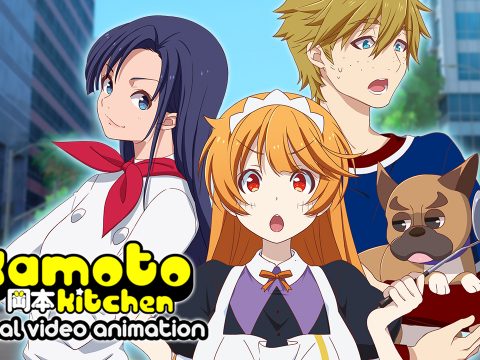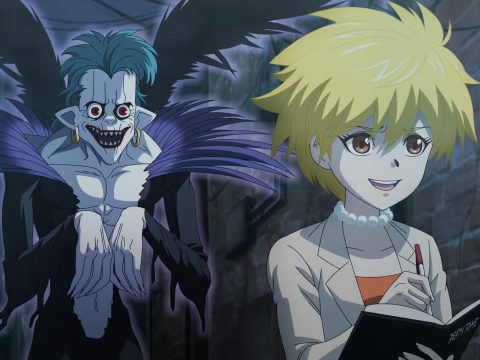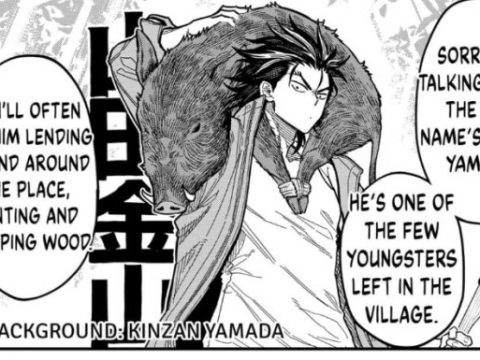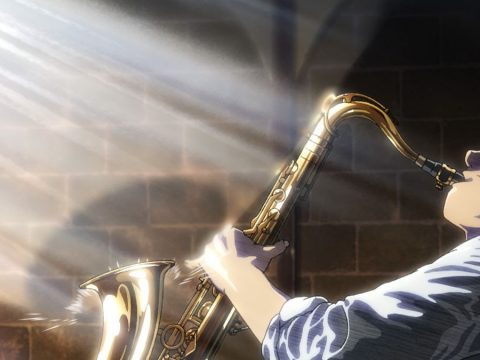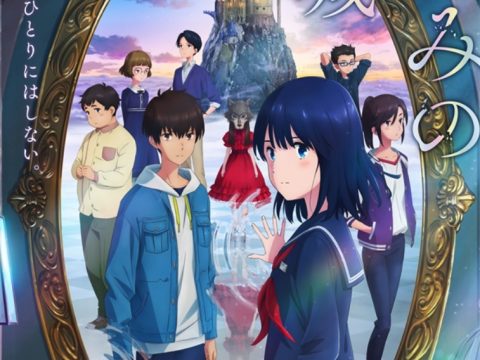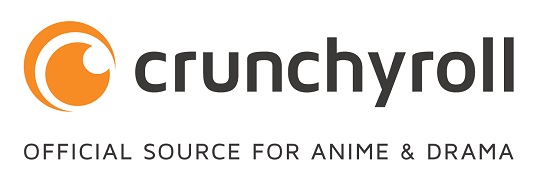
Since joining Crunchyroll in 2012, Tiffany Chen (official title: Senior Manager of Japan Channels) has seen a lot of changes at the anime streaming site, which has added a manga section, spun off its live-action drama hub into KDrama.com, and generally expanded massively over a very, very short period of time.
But what goes on behind the scenes to make that possible? In this interview, I had the opportunity to ask Chen about the labor-intensive process to get a show online by the Japanese air date, the hurdles involved when licensing a show from Japanese rights-holders, and future plans for the site going forward:
Jason Moses: What do you do on a day-to-day basis at Crunchyroll?
Tiffany Chen: When I started at the company, I did a lot of… I don’t know if I would call it grunt-work, necessarily, but I did pick up a lot of the slack that everyone needed help with. One of the things I didn’t realize when I joined CR was just how involved the process of getting a show on is. A lot of my job was communicating with Japan partners and what we call “materials delivery”. We get the scripts and video from Japan about a week ahead of time, upload it all to FTPs and all our servers to encode the video, send the scripts out to translators, translate the scripts, upload them to FTP where they get checked, and then finally everything gets uploaded to our server.

So I was very involved in making sure that whole process got taken care off. Making sure all the scripts were downloaded, uploaded, nothing was missing. If there was something missing, I’d ask for it, that kind of thing. I also helped out a lot with just contest promotions and marketing. A huge part of what we do on the site is promoting individual shows, and that’s something the content providers we work with really like to see. They like to see their shows being promoted across the world.
There are a lot of emails whenever a new show comes out to get all the approvals from Japan. They have to approve all the art you use, the PR lines you send out, everything.
JM: Do you know in general how many shows tend to have scripts available for the translators? I assume that’s on a show-by-show basis, depending on the production company and a host of other factors?
TC: Right. It’s show-to-show and publisher-to-publisher. Some shows we do subtitles and translation in-house, because we have our own style that we like to adhere to. For example, we keep in honorifics like -san and such most of the time, but we won’t leave in something like itadakimasu, we’ll translate that as “time to eat!” or something along those lines. Other companies might just leave that in as the original Japanese, or localize it even further beyond that. We try to keep things kind of neutral style-wise.
Some other shows will sometimes have slightly different arrangements, where maybe a publisher will contract out the subs, and we’ll coordinate with them to get the subtitles and everything lined up. So it really varies depending on the show and the publisher.
JM: It seems like there are only a few shows per-season that Crunchyroll doesn’t get the rights to. Jojo’s Bizarre Adventure, for example, didn’t show up on CR until about a year after its initial air date. Can you talk at all about why a given show either might not make it over or end up on a different site?
TC: With Jojo it was simply a case of the license-holder not wanting to sell it to anybody. Warner had never done a simulcast stream before and was concerned on how it would perform and of course piracy, so that took a bit longer to negotiate with them. Sometimes it’s like that, where the original license-holder just doesn’t want to sell it.
Other times it’s just about money, and it ends up being sort of a give-and-take where all the companies weigh their options. It’s not just cost, but about the marketing we can do for them, the kind of audience we can reach, that kind of thing. And it can be hard, because we don’t do DVD production, and Japanese companies are still very big on DVDs. That’s why they’ll sometimes go with a company like Funimation or VIZ because they can handle that.

But lately it’s been changing. Funimation with Attack on Titan, for example. We share the rights to streaming on that, and Funimation does the DVDs. Or with Sentai Filmworks, we’re very close partners with them, and oftentimes they’ll get all the rights, and then we get the streaming rights and sell the DVDs in our store once they come out.
JM: When you have a show that’s streaming on both CR and Netflix, for example, how does that work out between the two companies, revenue-wise?
TC: It depends. Most of those licenses are just non-exclusive. We don’t really split the money in those cases, it’s just like, Netflix bought the rights, we bought the rights.
JM: So with something like Kill La Kill, was that just Netflix seeing that it was a popular show and deciding to license it out, too?
TC: I’d assume Netflix sub-licensed that from Aniplex. From what I’ve seen, Netflix doesn’t actually go direct when it comes to this kind of thing. Knights of Sidonia was actually the first time they ever went direct to Japan in order to sub-license something. As far as I know, that’s how Netflix works, and I would assume they just went to Aniplex to sub-license Kill La Kill because that’s what we did, as well.
It gets tricky, and those kinds of situations are always complicated. Exclusivity is always good for us, but we would rather get the show and have it on lots of channels than not have it at all. It gets really hard when a licensor is only willing to give it to one service.
JM: Are there any companies out there who’ve been reluctant to work with you guys? Have you had any companies refuse?
TC: I’m pretty sure, like… we have relationships with every single publisher in Japan at this point. I honestly don’t think there have been any companies that have flat-out refused to work with us, though. Japanese companies can be conservative, it’s the nature of the business. But they’re coming around. I can’t really name any names, but there are definitely a few companies that are more persnickety than others. Some of them are really precise, like down to the way you space your paragraphs in an article, or they make sure the key art they provide is never cropped or changed.
There are also times where a creator has a very big hand in the committees that work with us, and they’ll be very protective. Which isn’t a bad thing, it shows their pride in the work, but they do emphasize that we don’t change anything that they don’t sign off on, which makes for a more involved process with less freedom to do things on our end.

JM: Less freedom in what sense?
TC: Oh, just things like promotions and banners on the site. With some shows we can make anything we want, with others it’s just key art, logo, that’s it. Other times they’re a bit more lenient. We’ve had companies like the guys behind Free! just say “Oh, you want to promote Free!? Sure!” And I think that was one of the reasons why Free! was so successful, too. We just had so much fun with it.
It’s not that they don’t want to work with us, it’s just that… Japan as a society tends to be a little more conservative, a little slower to change, especially when you have companies that have been around for 20, 30, 40, 50 years. They get used to doing things a certain way, the way they’ve always been done, and it’s kind of hard for them to change everything and embrace a new way of doing things.
But it’s been working. Just in the past couple of years that CR’s been active, they’ve opened themselves up to a lot of things they would have never said yes to initially. Just the idea of opening up to more territories, adding more languages, using their art for promotions and posters, that kind of thing. When we were just starting out they were very suspicious and asked a lot of questions: “How many are you going to print? How are you going to use them? Are you going to sell these? When is the event? How long is it going to be?” and so on.
But now they’re just like “Oh, okay. Art approved. We know what you’re going to do.” If they’ve never experienced it before of course they’re going to ask a lot of questions, but once they know what we’re doing and get that we’re going to treat the property right, it’s easier to do things like that.
JM: I was wondering about some of the more recent additions to the site from the past couple of years, like the manga section. Can you talk at all about how that came about? There are a lot of titles in CR’s manga section that I recognize from back before JManga went down. Did they work with you at all prior to their closure? Share staff?
TC: I think we were kind of sitting on the idea of doing manga for a while. JManga was around, we worked with them, but when they went down we weren’t sure what we wanted to do. So much of the source material for anime comes from manga, so it seemed like such a natural fit, and it really helps relations with Japan when you’re working with both mediums, so we decided to just go ahead.
Our licensing guy in Japan for the manga section is from JManga, so there were a lot of connections that came along with him.
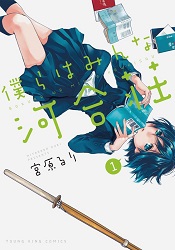
JM: Can you talk at all about how the manga section of the site’s doing, what the general feeling is about it internally? Good? Bad?
TC: Personally, I think it has a long way to go, but it has potential. We just need to give it a chance to grow.
JM: Do you think you need to get bigger, more recognizable titles, or…
TC: I’ve always felt that content is king, and right now I’d agree with people who say our manga section is lacking. We do have a couple of big titles, but I think we could get even more, and that’s sort of our main goal right now, to really build up the library. As a fan, I’d only pay for a service if there was something I wanted to read on it, and right now I think we’re actually picking up steam on that front. We’ve announced a lot of big titles that people are excited about, stuff like Bokura wa Minna Kawaisou and Watashi ga Motete Dousunda. More high-profile stuff that people will want to read, and I’m confident going forward because… I can’t say anything, but I’ve seen the list, and it’s good.
JM: Where’s Crunchyroll going in the next couple of years?
TC: I think we’re playing around with the idea of adding more channels in the future. We have KDrama, we have Crunchyroll, maybe there’s another spinoff in store where people would be able to other kinds of Japanese content.
From my perspective personally, I know we’re looking at moving to more devices. We’re aiming for world domination, all devices.
JM: What devices aren’t you guys on at this point?
TC: There’s stuff. We get emails from people. That’s the thing, right? With every new device announcement you don’t get people saying “thank you so much!” It’s just the people upset that we’re not on their device yet. (laughs)
Another thing that people are asking us for is original content. I can say that we’re considering it. I don’t know for sure that it’ll happen or not, but it’s definitely something we’re looking into. People have been coming and asking us to do our own show We’d also love to do more collaborations and merchandise with our mascot, Crunchyroll-Hime, whom you may have seen around conventions recently on our stickers and posters.
JM: Crunchyroll Hime The Animation?
TC: I mean, I dunno. Do people want to see that? People keep asking for it so we’ve been thinking it might be a cool idea to explore, but obviously nothing’s been decided, this is all just speculation. As usual, it’d depend on demand being large enough.



